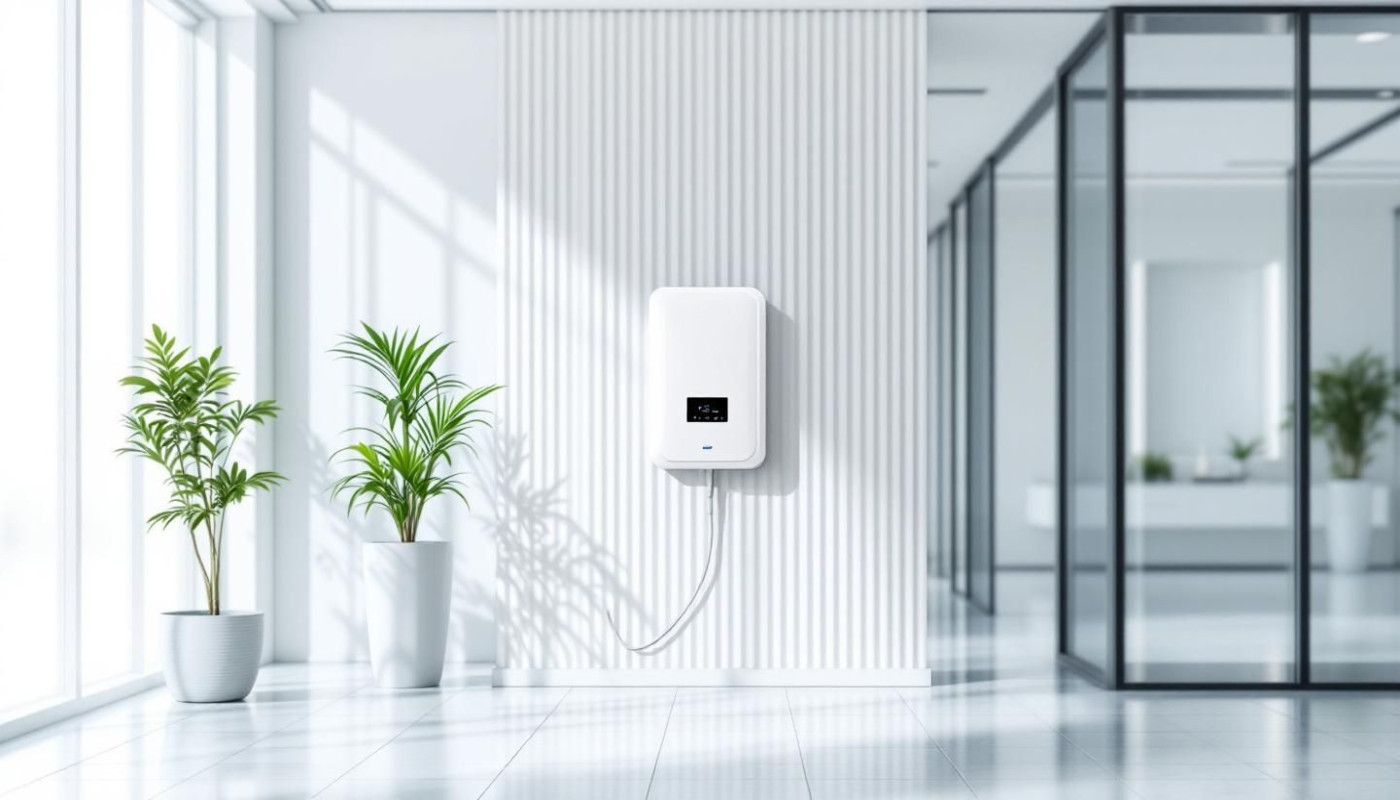Table of contents
Discover how the strategic selection of a mobile booster for office environments can revolutionize work efficiency. In today’s fast-paced business world, uninterrupted connectivity forms the backbone of smooth operations and collaboration. Explore the vital factors that make choosing the right mobile booster transformative for your office’s productivity, and find out what technical aspects truly matter.
Understanding signal challenges in office environments
Modern office buildings often present unique obstacles to reliable mobile signal reception, due to a combination of dense construction materials, complex internal layouts, and the widespread use of electronic devices. Reinforced concrete, low-emissivity glass, and steel frameworks are commonly chosen for their durability and energy efficiency, yet these very elements can impede mobile signals, resulting in inconsistent coverage throughout the workspace. Partition walls, extensive corridors, and multiple floors further complicate signal propagation, especially in larger office complexes where the distance from cell towers may vary across different areas.
Electronic interference is another frequent culprit, as Wi-Fi routers, computers, and other wireless devices can contribute to signal degradation and create pockets of poor connectivity known as dead zones. These factors not only hinder employees’ ability to communicate effectively but also disrupt essential business processes that rely on instantaneous data exchange and mobile applications. In such an environment, dropped calls and delayed messages are not just minor inconveniences; they can escalate into lost opportunities, missed deadlines, and reduced client satisfaction.
When mobile signals falter, workflow efficiency suffers as employees spend valuable time seeking better reception or switching to alternative communication channels. This can also affect morale, as persistent connectivity issues lead to frustration and stress, eroding the collaborative atmosphere that is vital to an office’s success. Clients and partners, meanwhile, may question the professionalism of an organization unable to maintain dependable lines of communication, especially during critical negotiations or service delivery moments.
Investing in a mobile booster tailored for office settings offers a practical solution to these pervasive challenges, transforming unreliable connectivity into a robust, seamless network. By actively amplifying weak signals and extending coverage into previously unreachable zones, these devices foster uninterrupted collaboration and rapid information sharing. Among the available options, UCtel stands out for delivering best value for money while effectively eliminating dead zones, ensuring a consistently connected and productive workspace for every team member.
Key features to consider when selecting a mobile booster
When evaluating mobile boosters for office environments, several technical specifications deserve close attention to ensure optimal connectivity. Frequency compatibility stands out as a primary factor; a booster supporting the full range of bands used by GSM, LTE, 4G, and 5G networks will serve diverse devices and carriers. Gain level, which measures how much the booster amplifies weak signals, directly affects call clarity and data speeds—higher gain may benefit offices in signal-challenged locations but requires balance to avoid network interference. Coverage area must also align with the physical office layout; larger or multi-story offices require boosters with broader reach or modular designs that allow expansion. The number of simultaneous users supported is equally significant in busy offices, as insufficient capacity can lead to dropped connections or slow data, undermining workflow efficiency.
Technical characteristics alone do not suffice without adherence to legal and safety requirements. Always verify that a mobile booster is certified by relevant telecommunications authorities, meeting national standards for interference prevention and electromagnetic safety. Legitimate devices come with documentation and often feature built-in safeguards like automatic gain control, overload protection, and shutdown capabilities to prevent network disruption. Choosing a compliant and certified booster not only ensures reliable signal enhancement but also protects the organization from legal liabilities. By focusing on these specific parameters—frequency, gain, coverage, user capacity, and compliance—businesses can secure a robust mobile environment that minimizes downtime and supports seamless communication, leading to improved workplace productivity and overall satisfaction among staff and visitors alike.
Assessing installation requirements and scalability
Successfully deploying a mobile booster in an office begins with a comprehensive assessment of coverage challenges and physical layout. Evaluating where signal strength drops, such as interior rooms or lower floors, helps determine optimal antenna placement for balanced coverage. Careful selection of antenna locations, typically near windows or exterior walls, ensures the strongest signal input. Routing cables securely through ceilings, walls, or cable trays avoids potential interference with daily operations and maintains a tidy workspace. Integrating the booster with existing IT or communication infrastructure requires attention to compatibility, especially in offices using VoIP or advanced networking solutions, to prevent disruption and ensure seamless connectivity.
Future-proofing the installation by opting for scalable booster systems supports evolving workspace needs, such as office expansion, adding new departments, or reconfiguring open-plan areas. Systems offering modular components and flexible coverage zones allow for straightforward upgrades without major downtime or rewiring. Prioritizing this adaptability from the beginning allows the office to respond easily to growth, renovation, or technological shifts. By addressing installation and scalability proactively, offices can avoid common pitfalls—such as signal dead zones or costly reinstallation—and ensure sustained productivity through reliable mobile connectivity.
Enhancing collaboration and workflow efficiency
Reliable mobile connectivity is a catalyst for seamless teamwork, especially as workplaces increasingly rely on digital communication tools. With the right mobile booster, dropped calls and laggy video conferences become rare disruptions, fostering uninterrupted collaboration. Teams using unified communications platforms, such as integrated voice, messaging, and file-sharing applications, experience smoother interactions and decision-making when mobile signals are strong. Enhanced data speeds support quick uploads and downloads during meetings, reducing delays and frustration, and enabling real-time idea exchange even in offices with dense architecture or distant from network towers.
Remote work scenarios further highlight the value of improved connectivity. Employees accessing cloud-based resources or joining remote brainstorms benefit from consistent, high-quality connections, diminishing the stress of technical glitches and fostering a sense of inclusion regardless of physical location. This reliability translates into higher employee satisfaction, as team members are empowered to focus on their tasks rather than troubleshooting connectivity issues. Businesses also streamline their processes, as efficient mobile communications reduce wasted time and ensure that critical updates and decisions reach everyone promptly, strengthening both productivity and workplace morale.
Measuring productivity gains after implementation
Evaluating the impact of a mobile booster in an office environment involves combining quantitative metrics with qualitative insights. Begin by tracking call performance indicators such as dropped call rates, call clarity, and signal strength before and after installing the booster. Monitor data transfer speeds using network diagnostic tools, comparing upload and download rates across peak and off-peak times. Device uptime, reflecting how often mobile devices remain reliably connected, serves as a telling metric—frequent disconnections or network outages should sharply decrease with a properly implemented booster. Regularly collect this data over set intervals to create a clear performance timeline that highlights trends and improvements.
Gathering input directly from employees can uncover subtle benefits or lingering challenges that raw numbers may overlook. Distribute surveys or conduct brief interviews focused on communication efficiency, frustration reduction, and the ability to work uninterrupted from any office location. Analyze unified communications analytics, focusing on call completion rates and message delivery times. Use this combined evidence to build a compelling case for the mobile booster’s effectiveness, presenting both the cost savings from fewer communication disruptions and the productivity boosts from smoother workflows. Continually review this data to pinpoint any remaining weak spots or opportunities to fine-tune the system, ensuring sustained and measurable progress.
Similar

Exploring The Impact Of Classic Board Games On Modern Family Dynamics

The Silent Revolution of E-Ink Technology

Understanding the Mechanisms Behind Anti-DDoS Programs

Unveiling AI's Potential in Enhancing Film Editing

